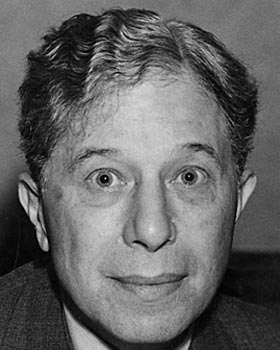About Hollywood Star Walk
The Los Angeles Times' Hollywood Star Walk provides both a virtual tour of the Hollywood Walk of Fame and a database of the stars and organizations enshrined on the sidewalks along Hollywood Boulevard and Vine Street.
Questions and Answers:
- How was this site created?
- When was the Walk of Fame created?
- How are stars awarded?
- How many different kinds of stars are there?
- Who has the most stars on the Walk of Fame?
- Why doesn't Clint Eastwood have a star?
- How do you determine dates of birth and death and locations?
- How does Grauman’s Chinese Theatre differ?
- Where did the biographies for the project come from?
How was this site created?
The Hollywood Star Walk virtual tour follows the actual order of the more than 2,400 terrazzo stars on the Walk of Fame, which stretches along Hollywood Boulevard and Vine Street. This order was created based on work by Times researchers to catalogue the locations and generate points on a map for each. Each star was photographed.
The virtual tour is powered by an in-depth database—created using more than a century of the archives of the Los Angeles Times. On the database pages, the locations of the terrazzo stars appear on a map as close as possible to their precise location. In addition, those maps may include other places meaningful in the star’s life.
Because some entertainers have been awarded stars in multiple fields, about 2,200 individuals or groups are represented among the more than 2,400 Walk of Fame stars.
As The Times continues to add biographies, articles and photos, readers are invited to help make connections between stars and the people and places that were meaningful to them.
As new stars are awarded, they will be added.
The Times was unable to locate three stars listed by the Hollywood Chamber of Commerce, those honoring Richard Crooks and the film career of Geraldine Farrar, who also has a star for her music career, on the west side of the 1700 block of Vine Street. Each still has a page in the database.
When was the Walk of Fame created?
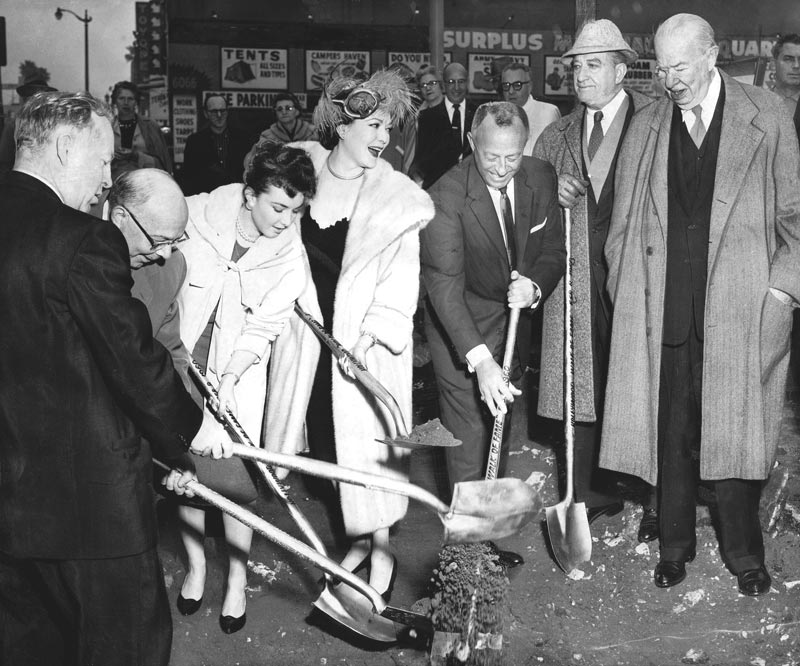
Since its beginning in 1960, the Walk of Fame has proved a perennial draw to tourists eager to see the stars. An estimated 10 million visitors come each year to the 18-block stretch.
The Walk of Fame was conceived in the 1950s by business leaders in Hollywood as a way to beautify the area’s historic core.
The groundbreaking ceremony on Feb. 8, 1960 featured actresses Linda Darnell and Gigi Perreau, as well as veteran actors Francis X. Bushman and Charles Coburn, using shovels to scoop up the dirt.
In addition, about 500 stars on the walk are currently blank, essentially acting as placeholders for future honorees.
Although the area near the famed intersection of Hollywood and Vine had been a central point for the fledgling movie industry prior to World War II, the area’s glamour had long since faded by the time producer Stanley Kramer’s star became the first actually set into the sidewalk on March 28, 1960.
The original plans called for 1,529 of the biggest stars of film, stage, radio, television and music to eventually be immortalized in the concrete using brass set in salmon-colored terrazzo stars surrounded by black backgrounds.
As of July 2013, The Times found more than 2,400 stars on the walk, representing 2,200 individuals or organizations.
How are stars awarded?
Anyone, including a fan, is allowed to nominate a candidate, however the celebrity must agree to be considered. If chosen, a star, or their sponsor, has to pay a fee for the ceremony, currently $30,000.
The initial project cost about $1.2 million and was sponsored by the Hollywood Property Owners Assn. and the Hollywood Improvement Assn. A group of Hollywood heavyweights, including Cecil B. DeMille, Samuel Goldwyn, Jesse Lasky, Daily Variety editor Joe Schoenfeld, Walt Disney, Hal Roach, Mack Sennett and Walter Lantz chose the initial group of 500 inductees.
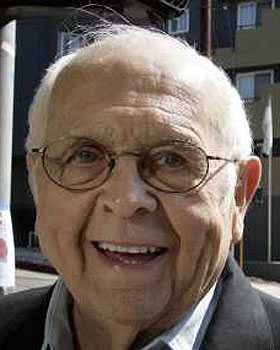
"Research for the nominations went back as far as 1912," according to a 1957 Times article on the process. "It was done by the Motion Picture Producers Assn. and included not only featured stars, but also comedians of the old two-reeler days, cartoon charades, top films down through the years and producers and directors."
Afterward, a secret five-member committee, chaired for many years by the late Johnny Grant, honorary mayor of Hollywood, voted on applications, using criteria such as "longevity in the entertainment industry" and "contributions made to the show business community."
Currently, committee members meet each June and vote in an average of 20 new stars, according to the Hollywood Chamber of Commerce. Posthumous nominations are accepted no sooner than five years after a person’s death and only one posthumous award is granted annually.
Once accepted, the star being honored has five years to schedule a ceremony. Living stars must show up in person.
How many different kinds of stars are there?
Seven types of stars can be found on the Walk of Fame.
The most common, by far, has been awarded for work in the field of motion pictures. Performers are also recognized for work in the fields of television, radio, live performance and recording.
In addition, about 500 stars on the walk are currently blank, essentially acting as placeholders for future honorees.
Fifteen "special stars," have been awarded to events or companies, including the 1969 Apollo moon landing and news organizations such as the Los Angeles Times and Variety. There is even a star for well-known lingerie model Victoria’s Secret Angels which was granted in 2007 to the well-known lingerie wearing models.
Who has the most stars on the Walk of Fame?
| Name | Stars |
|---|---|
| Gene Autry | 5 |
| Bob Hope | 4 |
| Tony Martin | 4 |
| Apollo Landing | 4 |
Gene Autry is the only person to be awarded stars in the five fields recognized on the Walk of Fame: film, TV, radio, live performance and music. During his lifetime, Autry emerged as both a top money-making entertainer and a powerful businessman. As his 1998 obituary said, "He was enormously successful at almost anything he tried—radio, records, songwriting, television, real estate and business, as well as movies and museums."
The late Bob Hope and the late romantic crooner Tony Martin are next with four stars each. Thirty-three people, including Frank Sinatra, Danny Kaye and Jack Benny, have been awarded stars in three fields.
Only two women have three stars, Dinah Shore and Gale Storm, a radio and television star best known for the program "My Little Margie."
In addition, there are four special markers at the corner of Hollywood Boulevard and Vine Street to commemorate the Apollo Landing in 1969.
Why doesn't Clint Eastwood have a star?
A number of the biggest names in Hollywood do not have stars on the Walk of Fame. There are numerous reasons for this; a celebrity must be nominated, selected and agree to the ceremony—in addition to having someone pick up the tab.
Nominees must have at least five years of history in their field before being considered, which means some of the hottest young stars may not yet be eligible. Stars also may simply decline to participate.
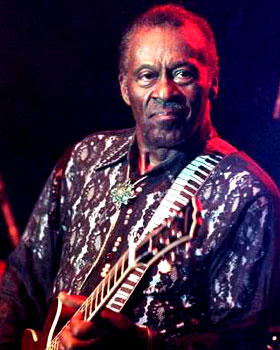
Over the years, there have been numerous controversies about who is and isn’t included. Among the fiercest was the fight over silent screen legend and movie pioneer Charles Chaplin. Although Chaplin had been unanimously voted into the initial group of 500, his name was removed after Hollywood business owners complained that he should be disqualified based issues with his morals— he'd been acquitted of "white slavery" in the 1940s —and his left-leaning politics.
Chaplin's star wasn't added until 1972, 12 years after his son sued over the exclusion.
In 1986, Times critic Patrick Goldstein puzzled over the chamber’s decision to bypass Chuck Berry even while less-influential inductees were green-lighted. Goldstein’s article prompted an angry letter from a reader questioning why Tom Cruise had been inducted just weeks earlier, noting Cruise "must have all of five film roles under his belt." Of course, in the more than two decades since, Cruise emerged as one of the all-time biggest box office draws.
Berry, by the way, was inducted the following year.
Among other big names missing from the walk: George Clooney, Julia Roberts, Robert Redford, George Lucas, Francis Ford Coppola, Al Pacino, Robert DeNiro, Michael Douglas, Sean Connery, David Lean, Angelina Jolie, Kate Winslet, Leonard Dicaprio, Diane Keaton, Denzel Washington and Woody Allen.
How do you determine dates of birth and death and locations?
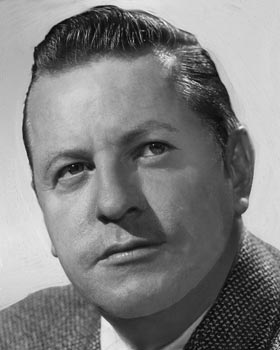
Times reporters consulted original obituaries as the starting place to determine birth and death dates. However, numerous stars lied over the years about their ages, using dates that made them either older or younger than they really were, depending on their needs at the time.
In other cases—as is true with Merle Oberon and Yul Brynner, among others—stars lied about the circumstances of their birth and ancestry. In Brynner’s case, a book written by his son after his death corrected several "facts" used by numerous news organizations, including The Times, in his obituary.
Some commonly used dates also appeared wrong on closer inspection. One example can be found in the entry for Ben Alexander, who began as a child star but was best-known as Jack Webb’s first partner on "Dragnet." Alexander’s date of death is often given as July 5, 1969 but the original obituary said that while he was discovered on that date, coroner’s officials determined he’d been dead for at least a week.
When additional information was reported by the family or biographers, The Times tried as much as possible to incorporate that information into the database. Almost certainly, more changes will be made going forward as additional information is uncovered or made known.
How does Grauman’s Chinese Theatre differ?
Ground broke for the historic Chinese Theatre in January 1926, with silent screen legend Norma Talmadge turning the dirt with a shovel presented by actress Anna May Wong.
The tradition of stars making impressions in the theater’s forecourt dates back to April 30, 1927 when Sid Grauman asked his friends Mary Pickford and Douglas Fairbanks to leave their hand prints and footprints in wet concrete at the new $2-million theater.
Eight days later, the theater had its star-studded grand opening. Since then a select number of big stars—about 200 in all—have been asked to participate.
The vast majority of stars who can be found at Grauman’s also have stars on the Walk of Fame.
Among the notable exceptions without Walk of Fame stars: Warren Beatty, Jim Carrey, Sean Connery, Jeanne Crain, Michael Douglas, Clint Eastwood, Richard Gere, Mel Gibson, Danny Glover, Michael Keaton, Ali MacGraw, Hayley Mills, Marcello Mastroianni, Al Pacino, Steven Seagal, Peter Sellers, Jean Simmons, Denzel Washington and Oskar Werner.
Where did the biographies for the project come from?
When available, the biographies found on the stars' pages came from The Times' obituaries or other Times coverage. Some of the earliest clips referenced date back to the 1910s and 1920s. In some cases, stories written during a star’s life or at the time of their death have been augmented with later material also published in The Times or from other sources. The authors and dates of those stories are included at the end of each entry.
In other cases, The Times' staff writers or freelancers have provided biographical summaries when suitable material was not available, which was often the case for living stars.
